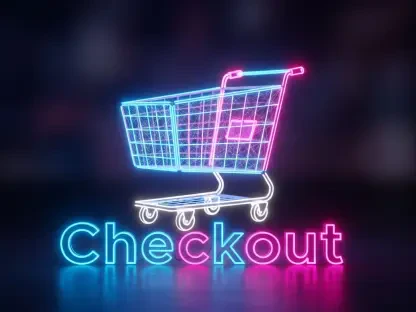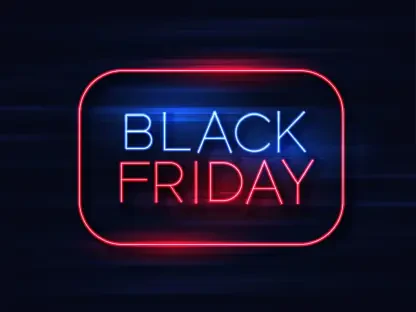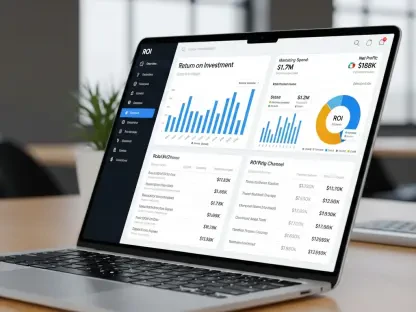In today’s dynamic B2B landscape, understanding buyer behavior is crucial for driving successful engagements. We have the privilege of speaking with Zainab Hussain, an e-commerce strategist specializing in customer engagement and operations management, who will share insights drawn from the 2024 B2B Buyer Experience Study by 6sense.
Can you provide an overview of the 2024 B2B Buyer Experience Study by 6sense?
The 2024 B2B Buyer Experience Study by 6sense is an in-depth exploration into how business buyers make purchase decisions in real-world scenarios. The study surveyed over 2,500 qualified respondents from regions like North America, EMEA, and APAC, providing a comprehensive look at the typical buying cycle, buying groups, and vendor considerations.
How were the survey participants selected for this study?
Participants were chosen based on their recent purchasing activities, specifically those who had bought at least $10,000 USD in annualized value within the previous 24 months. This criteria ensured the research was grounded in real, significant buying experiences.
What criteria were used to qualify the participants for the survey?
Aside from meeting the monetary threshold, respondents largely held manager-level positions or above, making them key decision-makers. The study covered multiple industry sectors with a significant portion from tech and software companies.
Could you explain the geographic distribution of the survey respondents?
The survey was well-balanced geographically, with respondents from North America making up 37.46%, EMEA 29.77%, and APAC 32.76%. This diverse spread ensures the findings are applicable across different markets and industries worldwide.
What were the average values for buying cycle length, size of buying groups, and number of vendors considered?
On average, the buying cycle lasted about 11.5 months, with buying groups involving around 10.9 individuals and considering approximately 4.6 prospective vendors.
How does the average buying cycle length compare to previous studies?
The average buying cycle length aligns closely with previous studies, suggesting consistent behavior patterns in how long it takes for B2B purchases to be finalized.
What insights does the study provide regarding the initial stage of the buying process?
The study reveals that buyers typically complete about 70% of their buying journey before engaging directly with potential vendors. This underscores the importance of early-stage content and engagement strategies that can influence buyer decisions before direct contact is made.
How significant is the experience buyers had with prospective vendors before making a purchase decision?
Prior experience with vendors plays a major role, as 92.6% of buyers had previous interactions with at least one vendor they considered. Moreover, 84% of buyers had experience with the vendor they eventually chose, highlighting how past experiences influence future purchases.
What does it mean that buyers initiated contact with vendors 81% of the time?
This statistic indicates a proactive buying approach where buyers prefer to reach out to vendors themselves rather than waiting to be contacted. It emphasizes the need for vendors to be easily accessible and responsive to inquiries.
How set are the purchase requirements before buyers reach out to vendors?
An overwhelming 85% of buyers have nearly or completely defined their purchase requirements before initiating vendor contact, reflecting thorough pre-contact research and planning.
What do the findings suggest about the timing of when buyers identify a preferred vendor?
Buyers tend to identify their preferred vendors early in their buying journey, dedicating a significant portion of time to narrowing down their options before making initial vendor contact.
How often do buyers end up purchasing from their initially preferred vendor?
Remarkably, buyers purchased from their initially preferred vendor 81% of the time, showcasing the accuracy and confidence of initial vendor preference formed through research and internal discussions.
Did the study explicitly ask about preferred vendors before contacting any vendors?
Although the study discussed initial vendor contacts, it didn’t specifically ask whether buyers had identified a preferred vendor before any interactions. This leaves some ambiguity regarding the formation of preferences prior to initial contact.
Based on the study, what should B2B marketing and sales leaders reconsider about their strategies?
Leaders should focus on strengthening early-stage buyer engagement through content and resources that aid buyers in their initial 70% journey. It’s essential to be proactive in offering valuable insights to influence decision-making before direct contact occurs.
How can companies use these insights to improve their engagement with prospective buyers?
Companies can enhance their digital presence and ensure easy accessibility to information. Providing comprehensive resources and responsive customer service will help align with buyer expectations and foster trust early in the buying cycle.
Are there any specific areas where companies tend to fall short in addressing buyer behavior?
Many companies may underestimate the importance of early-stage engagement, focusing too much on direct sales interactions. Ignoring the preliminary research phase can result in missed opportunities to shape buyer perceptions and preferences.
In what ways does this study differ from previous B2B buying behavior studies?
This study delves deeper into previously underexplored aspects like buyer-initiated contact and prior experiences with vendors. These unique insights provide a richer understanding of buyer behavior.
What unanswered questions from this study do you hope to see addressed in future research?
Future studies should aim to clarify whether buyers have an initially preferred vendor before any interactions and how these preferences are formed. It would also be useful to investigate the detailed journey within the initial 70% phase.
Can you highlight some of the most striking findings from the full 65-page report?
One of the most striking findings is the high percentage of buyers who had pre-existing relationships with their selected vendors. The report also emphasizes the proactive nature of buyers contacting vendors and the significant amount of pre-contact research.
Why is it important for industry professionals to review the full report?
Reviewing the full report is critical as it offers comprehensive insights that can help reshape marketing and sales strategies. Understanding detailed buyer behavior allows professionals to better meet buyer needs and expectations.
What additional questions would you like future editions of this study to address?
I’d like future editions to explore how buyer preferences develop and change during the 70% initial phase and what specific factors lead to the final vendor choice. Additionally, understanding the impact of emerging technologies on the buying process would be beneficial.
How might future studies build on the findings of the 2024 B2B Buyer Experience Study?
Future studies can build on these findings by exploring new trends and technologies influencing buyer behavior and decision-making. They can also address some of the gaps in the current study, providing a clearer picture of the entire buying journey.
Do you have any advice for our readers?
Stay attuned to the evolving needs of your buyers and prioritize early engagement strategies. By offering valuable insights and being responsive during the initial phases of their journey, you can significantly enhance your chances of becoming their preferred vendor.









